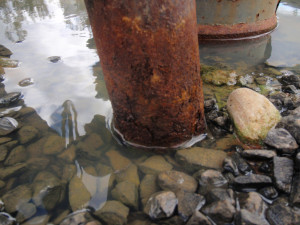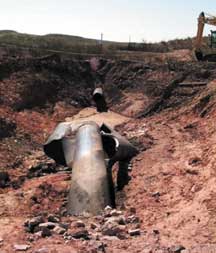External corrosion is a material deterioration process in which environment playing an important role. In oil and gas production, atmosphere, water and soil are three major influencing factors on external corrosion.
Atmospheric corrosion is defined as a corrosion process in which metal exposed to air and pollutants. The atmospheric corrosion is an oxygen corrosion by its nature. Atmospheric corrosion is a threat to structure items ( such as structural steel works, walkway, handrails, piping support, stairs, bracket etc) and process equipment (such as flanges, piping and vessels). The corrosion rate is largely depending on the time of surface is wet. Higher localised corrosion rate can be expected from the different aeration (e.g. crevice), in which differential concentration cells is accelerating factor for the corrosion process. The following items are the major factors for atmospheric external corrosion.
- Atmospheric contaminants
- Water precipitation
- Temperature
- Wind
2 ) Water environment
 Metal in water usually suffers more severe external corrosion. The water may either pick up the gaseous contaminants from atmosphere or dissolve pollutants from minerals. It also renders the benign environment for microbial growth. The contributing factors of the corrosivity of water include:
Metal in water usually suffers more severe external corrosion. The water may either pick up the gaseous contaminants from atmosphere or dissolve pollutants from minerals. It also renders the benign environment for microbial growth. The contributing factors of the corrosivity of water include:
3 ) Soil environment
The corrosivity of soils is affected by water content, aeration, pH level, temperature, salt content and microbial status. The soil environment is particularly important for high pressure underground pipeline integrity. The consequence of high pressure pipeline is often catastrophic. In August 2000, a large natural gas pipeline failed with 12 casualties in Carlsbad, New Mexico, United State, as a result of corrosion. The explosion also created a 25 meter long crater (Carlsbad disaster, 2000).


